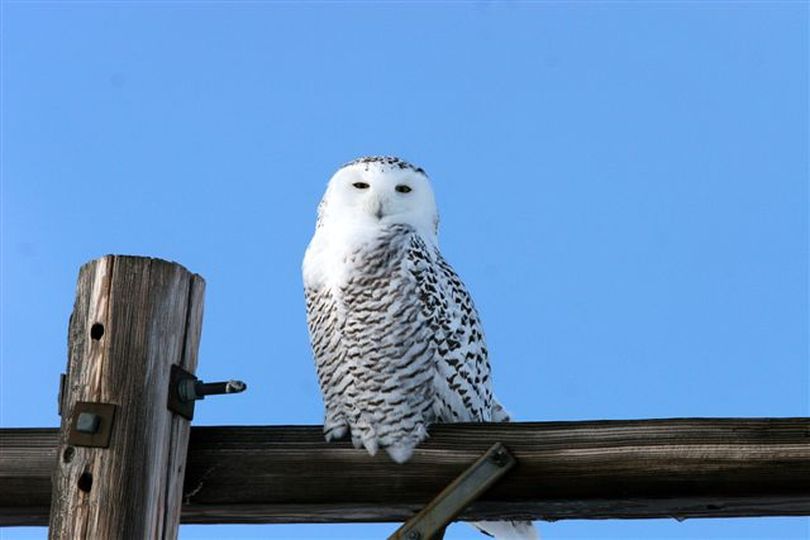Is it too early to call it a snowy owl invasion?

BIRDING -- Snowy owls migrating from the arctic to northern states stand out in a crowd, or even on a rural fencepost. Numerous sightings are causing a stir about whether this is a boom year for the white-feathered visitors.
Read on for some perspective and interesting details via Inland Northwest Birders from long-time bird observer Bud Anderson of Bow, Wash., a spokesman for the Falcon Research Group:
I would say that we are all still waiting to see just how big a Snowy Owl year it will be in 2011/12.
There may be just a few here in w. WA or there could be literally several hundred that will show up, often at around the same time, and even the same night, especially after a northern storm. We had a dozen show up unexpectedly in a single, large field on the Samish Flats, apparently arriving together during the previous night.
In the big years, they will be all over the place including downtown Seattle, Tacoma and other unexpected locations.
And, if the past is any indication, there will be the usual media blowout to look forward to.
But more typically, we get just a few through at this time of year and then many continue on south.
I have seen it where you'll have a few now and hordes arriving later in January.
But right now we just have to wait and see about numbers.
When they do come down, their behavior will be as individual as yours. Some will stay put, some will wander locally and some will keep going. One guy, years ago at Logan Airport in Boston, had a tagged Snowy move all over the east coast throughout the winter. It was essentially nomadic.
Our group (Falcon Research Group) caught and wing-tagged 10 or so quite a number of years ago. We found that most stayed pretty close to where we caught them on the Samish Flats but they were fairly late season birds.
During one big year, the area at the end of Thomle Road was really productive, exactly where the bird is being reported today.
On Samish, I have seen a dozen on a single barn roof, 35 while swinging the scope from a single point. Had one that even learned to roost inside a barn.
Most will be stone tame. At first they won't know how to perch in trees and other high places (remember that they are tundra inhabiting birds) so you'll see them on the ground. As the season goes by, they will perch higher and higher, first fenceposts, then poles, then roofs.
Incidentally, some do return to the same area in successive years as shown from our tags. Had one come back for three years.
And it is true that they do like to eat Short-eared Owls, so expect those numbers to drop substantially after a big Snowy year.
Oddly enough, we will be hosting Denver Holt, one of the leading experts on Snowys, in February at the Annual Skagit Hawk Count. I grilled him yesterday on the latest info on ageing and sexing them, hoping to become an authority by osmosis I suppose. I have to tell you that he is very reluctant to age and sex Snowy Owls in the field. This really suprised me as he has been working on the breeding population at Barrow in AK for over 20 years now (I think that number is about right).
So I would say that in all of the rush and hub-bub that a Snowy year will bring, be careful about what you believe about ageing and sexing them. There is really alot of mis-information out there.
Beginning birders....you may be in for a really wonderful winter.
Bud Anderson
Falcon Research Group
Box 248
Bow, WA 98232
(360) 757-1911
falconresearch@gmail.com
